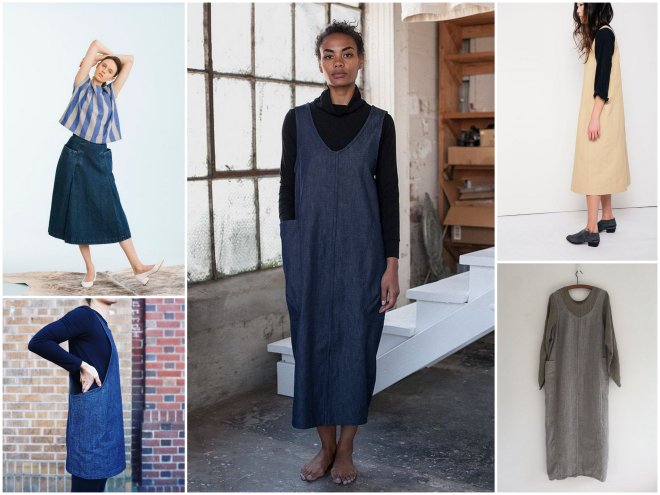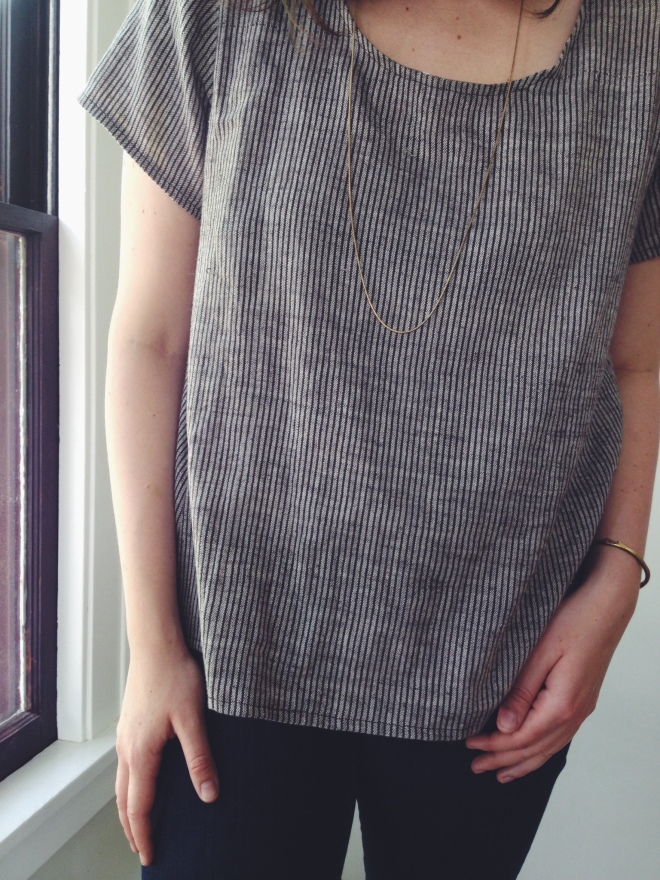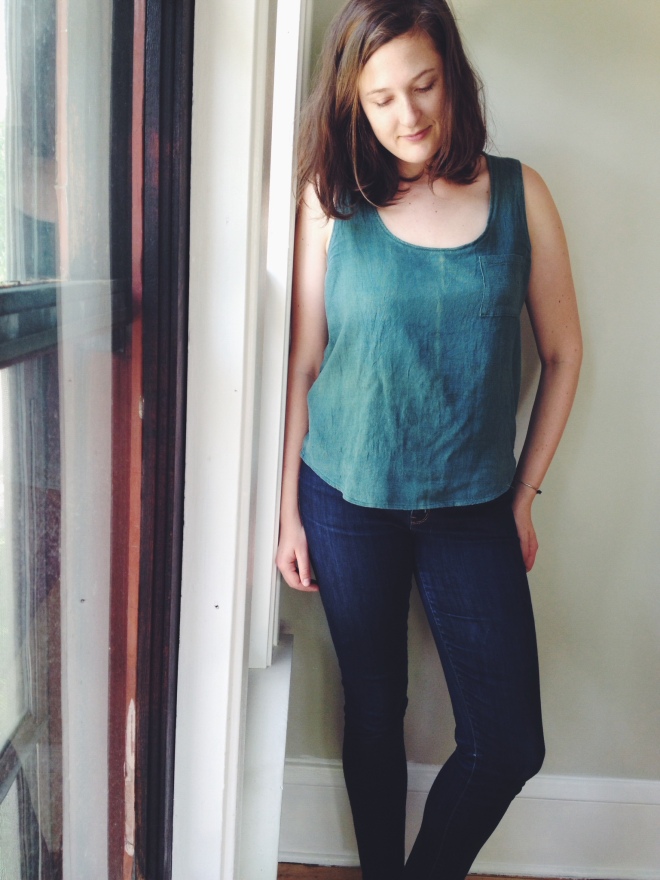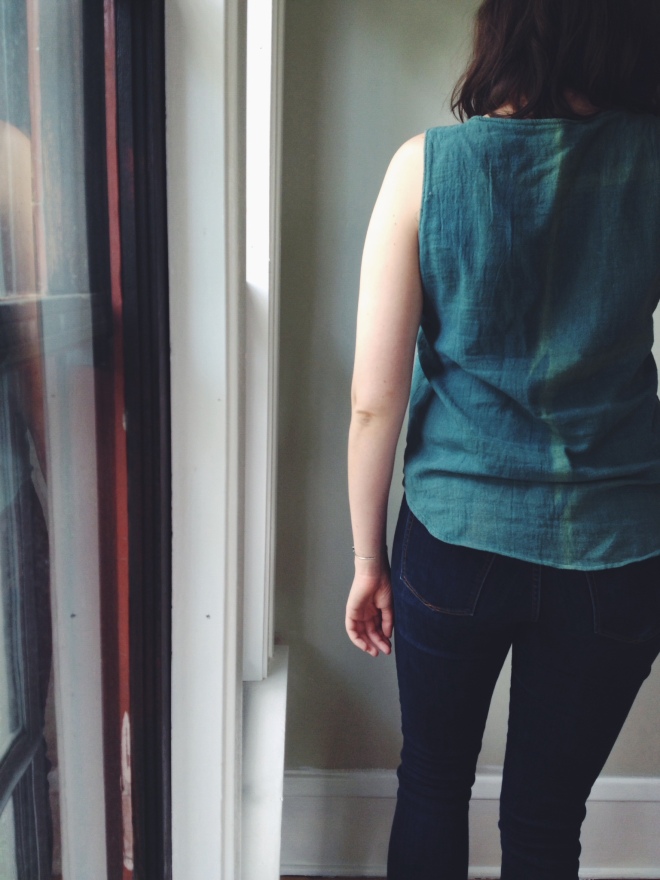
Last week’s Fashion Revolution campaign has provided so much to read, think about, share, and act on. Fashion Revolution Week continues to grow awareness and expand upon previous year’s one-day campaigns for transparency in the fashion industry (asking #whomademyclothes) in response to the 2013 collapse of the Rana Plaza Complex in Bangladesh. The tragedy killed over 1100 garment workers and injured 2500, many of whom were trapped in the building.
Of course, and most unfortunately, Rana Plaza was the largest but not the first garment manufacturing accident. Garment and textile industry working conditions have throughout history been abusive, with protests and backlash leading to the abolishment of child labor and the creation of the 8-hour workday.
When the Fashion Revolution campaign asks “who made my clothes?” it is very easy for us makers to answer “I made my clothes” — Fashion Revolution Day is but one week before Me Made May, after all. But last year the maker community went further, with many of us posting “I made my clothes” and then asking “who made my fabric?”
This year, Emily from In the Folds initiated a great set of prompts called Makers for Fashion Revolution, with a topic to post about each day: I made my clothes; By Hand; Mending; Upcycled; Second hand first; Skill up; Goals.
I really enjoyed these phrases as jumping-off points for thinking about why and how I make clothing. I posted almost every day with the series of pictures at the top (you can find me on Instagram to see the full posts :)). I love that there is this virtual community of people nodding in agreement about these issues, inspiring one another, swapping ideas, and crowd-sourcing trouble-shooting and transparency.
And yet, between the #makersforfashrev social media conversations and reading lots of Fashion Revolution articles in different news outlets, I kept coming back to how personal choice is situated within systemic change. When we ask brands for transparency, are we really pressuring them into complying with human rights and ethical practices? When we make (or mend) our own clothing, are we truly creating change in the fashion system, or are we small potatoes?
Just a few days into the week, I found myself scanning through #fashrev posts and feeling dismayed by both the vastness of the industry (80 billion garments leave factories each year) and the (self-critical) virtuosity of my own campaign posts (I make/mend my clothes, and therefore abstain from unethical conditions). My mind went back to an essay I once read for an environmental policy class: To Hell with Shorter Showers.
Turns out, the piece, penned by Derick Jensen, is actually called Forget Shorter Showers, but I think the way I’ve mentally catalogued it sums up the position that individual actions will never even approach the impact of industrial resource use and waste:
“I want to be clear. I’m not saying we shouldn’t live simply. I live reasonably simply myself, but I don’t pretend that not buying much (or not driving much, or not having kids) is a powerful political act, or that it’s deeply revolutionary. It’s not. Personal change doesn’t equal social change.”
Last year there was an article focused on the “the myth of the ethical shopper” which made some parallel arguments. Frankly, I hated that article. Not because I think we can solve all the problems of the fashion industry by shopping ethically, but because it lacked nuance, rejecting the idea that people can be engaged citizens who also shop.
I think in addition to asking, we need to demand change and enforcement of standards — from brands, from politicians, from independent certifiers. We need to divest from fast fashion. And we need to shop secondhand, especially if/when we regularly donate to secondhand shops. Which, of course, does come back around to personal choice.
While it’s possible to extend the “ethical shopper” narrative into a “myth of the ethical maker,” I think that would be entirely overlooking the added engagement provided by a tactile understanding of clothing (and perhaps fiber) production. In our digital age, craft and tactile art practices become a hands-on refuge for learning by doing, which, as Nicki Taylor highlighted in a piece on the Fibershed blog, engenders an appreciation for the systems of production and material sources that make clothing ourselves possible. Though not every maker may have that kind of revelation, I think it would be hard to find someone whose choice to make clothing has not affected their assessment of the quality and quantity of clothing produced by the greater fashion system.
My own experience of sewing and knitting has deepened my understanding of the time and effort involved in developing well-fitting, well-made, long-lasting garments. And precisely because I make some of my clothes, I am constantly reminded by threading the needle of my sewing machine or seaming up a sweater that there people around the world making pretty much every other piece of clothing I come across — as their livelihood, not a hobby.
So I think we also need to use that personal choice to invest in alternative systems – in fair trade, in regional manufacturing, in a fibershed. (If I do say so myself). But not just in terms of economic power — the mythical ethical shopper trap looms again — but in non-consumer efforts like building community, sharing skills, and lobbying politicians.
On Fashion Revolution Day, I opted to ask brands #whomademyclothes rather than focusing on my goals (per the #makersforfashrev prompts), but as I’ve been forming this post, it’s become clear to me that my goal is to figure out how to engage more actively in the political side of this movement for transparency. How to “show up” not just in my personal acts of making clothing, but in my civic engagement.
The personal is political, in so much as it is a hands-on way for us to understand systems of power that benefit from unjust politics — but the personal is not a substitution for the political.
p.s. Some resources I’m starting with: Clean Clothes Campaign; Labour Behind the Label; Detox Fashion; American Fashion podcast on TPP; learning more about Fair Trade standards



 Khadi is a term for handspun and handwoven cloth, but it is also emblematic of the movement for Indian self-reliance and freedom from British colonialism. Gandhi advocated for each person to spin their own cotton and each community to weave their own cloth so that the Indian people would create home-grown textiles rather than buying fabric back from the British who held tight control over the cotton markets. Gandhi encouraged a daily practice of spinning with a foldable spinning wheel or charkha and community-scale fiber farmning, weaving, dyeing, and block-printing; a true example that the revolution begins at home. (This cursory overview of the history of khadi was imparted by my teacher in India, Saatchi, and a brief stay in the village and ashram of
Khadi is a term for handspun and handwoven cloth, but it is also emblematic of the movement for Indian self-reliance and freedom from British colonialism. Gandhi advocated for each person to spin their own cotton and each community to weave their own cloth so that the Indian people would create home-grown textiles rather than buying fabric back from the British who held tight control over the cotton markets. Gandhi encouraged a daily practice of spinning with a foldable spinning wheel or charkha and community-scale fiber farmning, weaving, dyeing, and block-printing; a true example that the revolution begins at home. (This cursory overview of the history of khadi was imparted by my teacher in India, Saatchi, and a brief stay in the village and ashram of 



